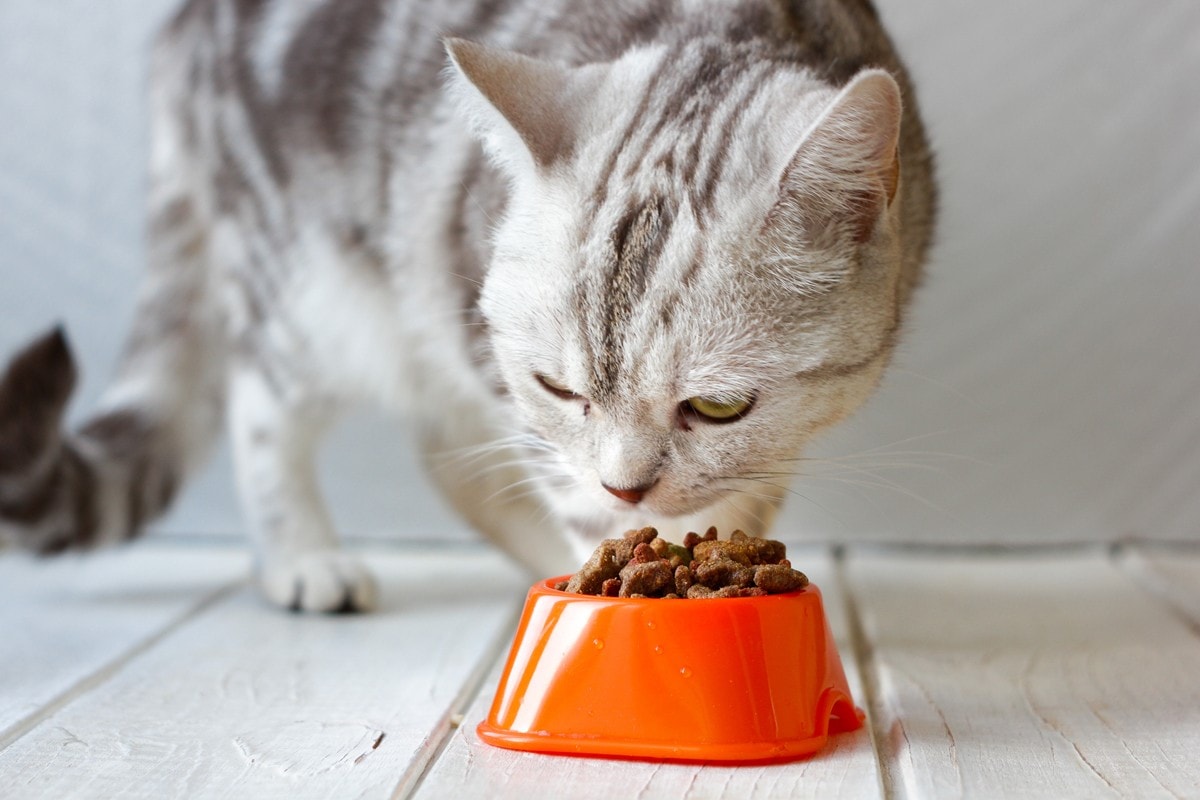The amount of food varies on the different life stages of your cat as well as his activity level and size. There are now a number of brands of cat food that are designed to meet a cat’s nutritional requirements at different stages.
It is always best to follow the recommended feeding guidelines on the packaging as these may vary from brand to brand. Below are guidelines only, if you have any questions you should consult your veterinarian.
How many calories does an adult cat need per day?
The average adult cat requires 20-30 calories per pound of body weight. So, a 9lb (4kg) cat should consume between 180 – 270 calories per day. Different brands and flavours of food will have slightly different calories.
| Kitten | Introduce food from 4 weeks of age but allow to continue to nurse from their mother until 8-10 weeks.
A kitten is growing quickly and needs to have several small meals a day. Feed a high-quality wet food 4 times a day (if time permits). Obviously, a 4-week old kitten will eat less than a 10-week old kitten, let them be the guide. If the food is gone within 30 seconds of hitting the bowl then it’s safe to assume you need to increase the amount of food you are giving the kitten(s). If there is leftover food after 30 minutes, then decrease the amount. |
| Adult cat | An adult cat should be fed twice a day, morning and night. As a rough guide, a cat should have around 200g (7oz) of wet food a day (2 meals x 100g (3.5oz). |
| Senior cat | As cat ages, he typically spends more time sleeping and less time chasing flies around the house and therefore burns fewer calories than a more active cat. |
| Pregnant or nursing cat | A pregnant cat has much greater nutritional needs than an adult or senior cat. Feed pregnant and lactating cats a kitten diet, which is higher in calories. |
Dry food
I have always left dry food out for my cats to nibble on between meals. They are fed wet food morning and night, any wet food that hasn’t been eaten within 30 minutes is discarded.
The above is a guide only. I tend to use trial and error when it comes to feeding adult cats. As a guide, you can determine the weight of your cat by running your fingers along the flanks. You should be just able to feel them. If they are very obvious, your cat is underweight if you have difficulty feeding them, he is overweight.
Both the overweight and the underweight cat should be checked by a veterinarian to make sure there isn’t an underlying cause. There are a number of medical reasons for your cat’s weight to fluctuate. If the cause is dietary, you will be guided in a safe way to increase/decrease your cat’s food consumption. Generally, feeding an underweight cat more food is all that is required, but the overweight cat needs to be put on a diet under strict veterinary supervision to avoid hepatic lipidosis, which is a life-threatening disorder.
Water
All cats (with exception to kittens under 4 weeks) should have access to clean, fresh drinking water at all times.
Once weaned, kittens don’t need milk, and most cats are intolerant to the sugars in milk. If you do want to give your cat milk, buy lactose-free cat milk.

